– Welcome everyone to Wednesday Nite @ the Lab. I’m Tom Zinnen. I work at UW-Madison Biotechnology Center. I also work for the Division of Extension, Wisconsin 4-H. And on behalf of those folks and our other co-organizers, PBS Wisconsin, the Wisconsin Alumni Association, and the UW-Madison Science Alliance, thanks again for coming to Wednesday Nite @ the Lab. We do this every Wednesday night, 50 times a year. Tonight, it’s my pleasure to introduce to you David Gagnon. He was born in Elgin, Illinois and went to Elgin Larkin High School. Then he came here to UW-Madison to study computer science and he stayed to get a master’s degree in curriculum and instruction. He works for the Field Day Lab, which is part of the Wisconsin Center for Education Research.
And the Field Day Lab develops educational online games to advance teaching and learning. Tonight, he’s gonna talk with us about how only a game can save us in the development of online games to speed equity and effectiveness in teaching and learning. Please join me in welcoming David Gagnon to Wednesday Nite @ the Lab.
– Fantastic, thanks Tom. So, yeah, I’m David Gagnon and I direct a educational game studio and research laboratory called Field Day. And I’m talking right now from the top of the Education Sciences building and happy to be part of this great university. So today, we’re talking about video games and as you might guess, for someone who invested their career into educational video games, I probably have a positive opinion. But I do wanna take a second to step back and start to address the main concern, which is this slide that says, “Video games melt kids’ brains. ” And this is a concern that people have that literally video games melt kids’ brains. And the concerns are ones that are slightly founded.
You know, video games are a form of entertainment, usually, when they’re talked about. And there are some concerns to this, and I think it’s good to handle them upfront. So in a recent study, we see that video gamers, ones that, you know, report playing video games a significant amount of time every week, do talk about some of the problems they run into, things like lack of sleep because they stayed up playing video games or, you know, decreased social time is also, you know, a concern. The other one that we hear commonly in the media is there’s real, no research around it that’s solid, but this idea that video games practice violence and would make people more violent. So these are some of the things that people are constantly talking about and concerned about. I’d like to turn our attention, though, to just try and understand who is playing video games and what this audience looks like in order for us to really set the stage for what we’re gonna do later in the talk, which is get into the learning theory of games and then later how I believe they can be applied as a public good. So who plays video games? This is probably the first, you know, thing that we can get into here. So first thing that might be surprising to you is that based on recent studies that have taken surveys of game players, we see that the average player is actually 35 to 44 years old. So the average player is probably not that young person you’re thinking about. And the other thing that might be a bit surprising is that it’s about half male, half female.
So when we think about who’s playing, this is not just young guys playing. The other thing that might surprise you is that the most popular kinds of games right now are actually casual games played on phones. So it’s probably a little more representative of you know, game players if we think about middle-aged women playing Candy Crush than it is just 18-year-olds, you know, playing Call of Duty. That said, there are some really shifting sands around the kinds of people that play games and the practices that surround that gameplay. The biggest one to note is probably this idea of online streaming. So this is where game players watch other game players play games, literally just observing their own play. And this is a somewhat recent phenomenon, and it’s become very, very popular with half of reporting game players spending at least some time a week watching streamers. Another kinda funny thing here is that this is encroaching on time spent watching sports. So the youngest of the kids surveyed really talked about how they prefer or they’re moving more and more towards watching streamers than watching traditional sports. So in one regard, this is an image of, you know, some of the kinds of kids that would be playing games and specifically the ones that are streaming and getting into things like esports, which is where game players are playing competitively.
Now the industry around gaming is also something that we really need to talk about. It’s absolutely huge. The gross revenues of the gaming industry at this point, outpace putting Hollywood together with North American sports. So we’re looking at about $180 billion a year industry that exists in video games. And you can compare that to about $100 billion for Hollywood or $75 billion for the North American sports industry. If we compare this like title to title, one of the largest games that’s out and was released here just in 2020, Call of Duty, this game has brought in what’s estimated to be about $30 billion, just in the last few months. And we compare that game to the largest grossing Hollywood film made to date, which is Avatar that has pulled in a total of about $3 billion, you know, over quite a few years now. So we’re looking at an industry that is absolutely massive. And actually, that is one of the reasons why I’m at a big public university and not in the commercial entertainment game space is that like any other media, games are suffering from the same kind of market pressures that really do want to see, you know, kids play longer and longer and, you know, that’s how they’re gonna maximize on engagement and that’s how they’re gonna maximize on profits. So the gaming industry itself is a big force to deal with.
And I think that there needs to be some pressures here, you know, to not only think about it as entertainment, but some of the ways we do at a university. So let’s shift into kind of part two of this talk, which is learning with games. This is a field now, and actually, we’ve got deep roots here in Wisconsin. The Games, Learning, and Society community was founded here, there was a long-standing conference, some of the best scholarship came out of this university, and Field Day really is an extension and kinda built on a lot of that previous scholarship. To enter into this, I actually wanna start with a thought experiment, which is from philosopher Frank Jackson and came up with this as part of a book in 1982. And the thought experiment is called Mary’s Room. So in Mary’s Room, we have a fictitious character, Mary, who lives in a black and white room with no color anywhere around, there’s no color art, her clothing is black and white, everything about her world is black and white. And inside of this room, she has a computer. And now, Mary is an expert in color. She could tell you the wavelength of every color that exists in the spectrum, she understands the kind of psychometric affects of color hitting, you know, the eyeball and being translated into signals in the brain.
She understands the psychology of perceiving color. Mary is the world expert on color, even though she’s never seen color. She has access to all the books, all the theories, all the physics. So imagine now that this world expert on color has a problem with her computer. And this problem creates a large, actually red apple sitting in the middle of the screen. And in this moment, something changes about Mary, Mary now has experienced color. Now the thought experiment really is trying to explore the idea that there are different ways that we can know things and really makes clear this thing that hopefully is common sense, which is that an experience of something like color is very different than a description about color or what we probably could just say that everybody knows this phrase that street smarts are different than book smarts. So the learning theory has a very similar kind of jumping off point to explain this difference between book smarts and street smarts. And that theory is called situated learning or situated cognition. This theory also came around about the same time as Mary’s Room with the article by Brown, Collins, and Duguid written in 1989.
And it really makes this big claim that knowledge is situated, knowledge is constructed and sits in the middle of these three big ideas. And that is the activity that the learner is doing while learning, the context in which they’re doing that learning, and the feedback systems that exist around them. So through this theory of situated learning, we can start to break down learning environments to understand, you know, how situated they might be or not be. So let me turn your attention to this. This is a top-of-the-line flight simulator. This is been a mainstay of training pilots for, you know, years and years now. And if we take the lens of situated learning to analyze this flight simulator as a learning environment, I believe it’s very fruitful. So ask yourself, what are the activities that the learner is doing while they’re in this simulator? And to even go a little deeper, like think of the verbs that you would use to describe someone learning in this environment, if you were looking over their shoulder. There’s really a whole hierarchy of things. At the very lowest level, they’re pushing levers, they’re pushing with their feet, you know, the pedals, they are looking at instruments and reading them, they’re picking up the radio and talking over it.
The verbs they’re using or the actions they’re using are exactly the same actions that a pilot does while flying. And that would be kind of the highest level of the hierarchy. They’re learning to do these physical actions, those physical actions are translating into things like, you know, landing or taking off and all of those support the high-level thing of flying. Now think about the context here. Well, in a flight simulator, we’re training usually on a particular aircraft, which means everything about that environment has been physically designed to be an exact replica of the exact model of aircraft that they’re training on, which means every knob is in the same place, the stick is in exactly the same spot. You know, everything about this thing, as much as money can buy, has made it an identical context to the context of flying the actual aircraft. There’s also even a social cultural context here, because when you’re in a simulator, you’re within the world of flying, which means if you wanna, you know, communicate with ground control, you’re using the same language, the same vocabulary, the same protocols that a real pilot would. You’re not gonna, you know, pull up the radio and, you know, talk, you know, as a lay person would. You’re gonna be learning how to use the same language that we would use professionally. And the last thing we’ll mention is feedback.
Feedback also has kind of a hierarchy to it. In a simulator, there’s the really high-level feedback you might notice right away, which is like crashing. But if you go down a layer from that, every movement that’s done is given immediate feedback through the changing of dials and the changing of the, you know, simulated landscape outside. And the feedback is happening, you know, with these different scales of time. So very small things, like just a slight shift of the horizon, you know, all the way up to, you know, something a little bigger like navigating larger pieces of geography. So flight simulators would be considered very situated learning environment. Let’s compare that here to this textbook, which we’ve seen is a common textbook, I’ve given talks like this before and had pilots mention that they have used this text as part of their training. And we can apply the same kind of analysis to a text and say, what are the activities? What is the context? And what is the feedback of learning in this way? So if we think of the activities of a textbook, the verbs are a little harder to come by. I think really it’d be safe to say what reading, highlighting, taking notes, and anything beyond those kinds of verbs, maybe turning pages, you know, we’re starting to get pretty abstract. So really, those are the verbs, turning pages, reading.
Now, if we think of the context of the learning that’s happening with a text, it’s pretty broad. This could be in a classroom setting, it could be on your couch at home, it could be at a Starbucks. But the context, maybe by design, of a book is really wide open. So we don’t know much about it. And then finally, the feedback that’s given in a text, if we analyze that, we would see that potentially, you know, there’s questions and answers at the end of the book. But outside of that, it’s not, you know, there’s not a lot of assessment happening, there’s not a lot of feedback that happens with a text. So this language of situated learning allows us to start breaking apart learning environments into these categories and start to have a little more robust of a vocabulary around the kind of learning that happens. The last example I’ll mention here is paralleling this scene, which is from a ER Simulation Lab. There’s a $100,000 SimMan 3 who’s laying on a table here and undergoing some sort of crisis. And this simulator, you can stick a needle into it, you can measure its blood pressure, you can, you know, draw blood.
This thing is designed to simulate everything about a patient you could. If you notice the context that they’re in, it’s a complete simulation of a emergency room with, you know, every piece of equipment at the same spot, the clothing matches, again, the social cultural context of the way that you’re talking matches how you would in a real situation. And then also the feedback, whoever’s running the simulation is behind the scene and trying to mimic the exact kinds of things that would happen to a patient undergoing whatever they’re training on here. And we parallel that with a lecture where again, the verbs are things more like listening and talking and taking notes. The context is that of being surrounded by students, not practitioners, and the feedback within a lecture potentially through, you know, like dialogue or discussion would be about it. So again, situated learning gives us a way to really come to this big statement. And it’s the one that sets the stage for why games for learning make a lot of sense. And that is real learning, good learning is really a matter of creating a designed experience for a learner. And video games are an optimal environment for simulating experience. So that’s what we can use as our framework moving forward.
So I’m gonna take a couple minutes to show examples now of the ways that some very popular commercial video games have achieved that. And I’m gonna start with one of my favorite games of the last, geez, decade, and that’s probably Kerbal Space Program. So in Kerbal Space Program, you are guiding a developing space program, kind of like what the United States was going on with the Gemini program. And in this game, you’re starting with the most simple, simple things, basically an astronaut that you can strap to the top of a small rocket and you are designing the aerodynamics of that, you’re designing the actual construction of these ships, you’re also working within the constraints of funding and research. And over the period of this game, what happens is you unlock more and more equipment and more and more technologies and techniques that you know. And eventually you’re in orbit, eventually you’re docking with a, you know, space station that you’ve built and exploring deep space. And this would all come under the kind of larger category of good learning environment with games that I would call a sandbox. So sandboxes are really interesting in that they give the player a space to play and to try things out and to see what happens while completely mediating the consequences. We don’t have to spend hundreds of thousands or hundreds of millions of dollars. We don’t have to wait months and months for things to be constructed, and we can fail all the time and the consequences are low.
And this sandbox environment created by Kerbal, I would suggest is a foundational, a good quality of a well-designed learning game. Now let’s turn over to another game called Rock Band. Rock band is a very popular game, it’s been re-released in a couple versions. This is a scene from Rock Band 2. And Rock Band in this case, if you haven’t played it, it’s a game in which you take on the identity of a up-and-coming musician and you play on a simulated drum set or a simulated guitar or a karaoke-like digital microphone and you sing along with some of your favorite songs. Now, the reason I bring this up is it highlights this notion of a mediated identity. And in this case, what happens is the player is able to not have to just be themselves, they don’t have to just be a novice musician, they don’t have to just be a, you know, middle-aged woman playing a game in the living room with some friends. But we take on the identity of someone who rocks. And this scene here is one of, you know, seeing probably my favorite screenshot of a severe rocker. Now, by doing that and by taking on that identity, we get to play around with this thing that some learning scientists call an epistemic frame.
And that means we get to take on the identity, the discourses, the vocabulary, the values of someone who participates in that domain, in this case, a musician. And that itself is an educational activity, that is one that is under constant research and very exciting. Also on Rock Band, we’ll look at the ways that we can do feedback in the system. And Rock Band is a really good example of providing what I’m calling here domain-specific feedback. So when you’re playing Rock Band, the primary way that the game is communicating to you whether you’re doing well or not is in terms of music itself. If you’re playing the drum line and you’re playing on the drum kit of this game and you miss a note, the drums drop out of the audio that you hear. Or if you miss a note on the guitar, you hear a squeak where there should be a chord. And if you think about it, this is a really profound idea that education or at some sort of learning environment could communicate with you in the exact domain of the thing being learned. Let me contrast that for a minute with the way that we commonly do things in school. Now in school, we commonly will do an activity like researching feminist theory around literature and we write a report.
And the thing that we get back in feedback is, well, often a number, 82, and it’s the convention of using numbers and grades to give feedback for learning that have almost confused us. And my soapbox moment here actually comes to pulling out two pieces of vocabulary that I think are useful going forward. You will hear people talk about learning with games or learning games, and then you’ll also hear another word called gamification. I wanna separate those while we’re talking about Rock Band and feedback. Gamification is a system that is applied that uses game-like feedback, usually points or stars or badges and apply that to something of a totally different domain. Everything from probably where it came from, earning miles on a frequent flyer program with an airline, all the way down to brushing your teeth and gamifying that activity. Most of what I’m talking about is not gamification, it’s something totally different. If we would use that kind of vocabulary to describe, you know, learning with games, what I think we would see is that school, most of formal school for decades now has become fully gamified. We give out grades and diplomas in a feedback language that’s completely different than the language of the domains themselves, history and math and you know, scientific inquiry. And we’ve done that really out of convenience.
So I wanna make a big case, not for gamifying school, but providing video games that teach, which is a totally different thing. And it’s about designed experience. Okay, off my soapbox. So let’s look at another game, the Civilization series. In this game, you play the leader of a civilization, you can pick people like Genghis Khan or George Washington and you’re really guiding a whole civilization from, you know, its inception all the way to its complex result. One of the things that’s very interesting about this game and series of games in particular and highlights a principle of good learning game design is that in Civilization, the complexity of the simulation scaffolds. And what this means is we don’t get dropped directly into, you know, running a large nation with all of its politics, religion, agriculture, you know, domestic and foreign relations. And instead, this game has that big simulation running behind the scenes. But instead, we start as a simple settler. And this one settler only has two things available for them to do, which is to keep on walking or to settle and form the first town or what will become the first town.
And in this way, we’re not kind of front-loading everything that the learner might ever need to know. But instead, what’s happening is we’re always slowly increasing the complexity of the simulation, right when the questions arise. So we first get introduced to animal husbandry right when we start thinking about farming in that way, and we get interested in economics right when certain problems arise within the community. And by the end, it’s kind of amazing how many complex systems that the player ends up managing. Now, I’ll also turn over, kind of following along the sandbox theory and go a little bit more into the idea of failure. Now, this game, which is called Plague Inc. is particularly, potentially raw of a topic right now in our era of COVID. Plague Inc. , which came out I would guess, about a decade ago now is a game in which you really play the forces behind genetic mutations of a virus. And your job in Plague Inc.
is a pretty dreary one; you win by killing everyone on the planet. So instead of teaching, in this case, about viruses by having you try to block against a virus, you take on the role of a killer virus that’s trying to wreak as much havoc as possible. Now what’s interesting about this is that, again, failure and the horrible situation here is one that lives within the simulation on the computer. Failure isn’t failure in the sense that it can be in real life, where it can be devastating. It can be horrible, and especially in the world of high-stakes testing in schools, this can be, you know, a horrible thing that you never recover from. Instead, failure is bounded within the simulation, which you can just hit reset if you want. And actually, better games over the last decade or so have gotten even better at allowing failure to be fun, failure not to be a setback, but a way of learning. So this is a place that video games have a lot to teach us about good learning is that they put failure at the center of the learning process and they make it quick, they make it fun, and they make an instructional. Now, another thing that we can put our focus on with video games is the notion of a fish tank. So a fish tank is, you know, a metaphor here that describes the way that the big, complex ocean can be kind of modeled by taking just certain species out of it and putting it inside of a tank.
To understand the way that, you know, an aquatic habitat works, you don’t have to have every single part on display, you don’t have to jump straight into the infinite complexity of the world. But instead, you can create a model, you can create a fish tank of the ocean, learn quite a bit, now that you know what to focus on. This little simulation game, which is called We Become What We Behold, it was produced just a few years ago by Nicky Case. And it is an excellent example of a fish tank, as it relates to watching a couple simple and separate processes emerge into something much more complex. And in this case, the game is modeling the idea that people are attracted to interesting news and the world of news is rewarded for giving people something they’re attracted to. And I’ll warn you, it turns out pretty bleak in really only probably 5 to 10 minutes where you see how the simple pursuit of interest creates this very, very emergent and very catastrophic situation. So in this way, video games allow us to have these fish tanks that allow us to look at the causes of very complex and emergent complex phenomenon. And lastly, the game I’ll mention is Pokmon Go. And probably, unless you’ve been hiding under a rock for the last few years, you’ve at least encountered some people that are talking about Pokmon Go or have played it yourself. In Pokmon Go, the thing that I’ll highlight is that we’ve got a video game that is starting to play around with its relationship to real-world location.
I’ve got a colleague of mine at American University, Ben Stokes, who recently finished some work studying Niantic and the idea of these community days that Pokmon was promoting over the last few years. And we’re seeing that games like this that are played in physical space, are played out in the real world can support all kinds of really interesting location-based activity. And I have to say that if, you know, you’ve met any sort of outdoor educator, they certainly have had a moment that they’ve said, “Gosh, what is this power of a game like Pokmon Go? And how could we harness it?” Now, we’ll talk more about that in a minute. So educational, I’m sorry, non-educational games really do even lean into a whole set of learning theory and way that we can understand how learning takes place. And they act as a optimal environment for learning, I’d suggest, in these categories of things like sandboxes and of fish tanks and of mediating identity and mediating failure. And they all go back to this idea of street smarts versus book smarts. Games act as ways to simulate experiences to provide learners with that sort of learning, one that’s different than you can get from other forms of learning. So let’s turn our attention then in part three of this talk over to Field Day and what we’ve done and what we’ve built. This is a bit of a tall order when you think about providing an actual, you know, failure-rich mediating identity environment for learning that’s rich and complex. You know, this isn’t an easy thing to design.
And I think we’ve made some progress. So we’re gonna take a look at some of those projects, each with its own little humble goal and also some of the research that’s come out of it. The first game I’ll mention is Jo Wilder and the Capitol Case. Jo Wilder was a game that was produced in collaboration with PBS Wisconsin as well as the Wisconsin Historic Society. And this is a game that is all about a character named Jo Wilder, a young woman who is working alongside of her grandpa at the historic society in order to do the kinds of things historians do. She follows evidence, she interviews people, she looks at artifacts, and she ends up arguing for the correct interpretation of some evidence. Now, Jo Wilder is a very interesting game, because instead of teaching history, which really what its learning goals are centered around through, again, kind of talking about history, in Jo Wilder, you take on the role and even some of those epistemic frames I mentioned of a historian, so you do the things historians do. The verbs of the game, you know, aren’t reading and highlighting and memorizing, but they’re really tracing down leads and corroborating evidence and, you know, digging through documents to try to understand the meaning of something. We happen to need a context to do that. So during the game, there’s two major stories, one of which is around the women’s suffrage movement in Wisconsin and the latter one is the formation of Earth Day.
So certainly there are some historical names and places and figures that are learned. But the game allows us to actually have kids inhabit the role of historian. The game is wildly popular, it’s played approximately 100,000 times a year at this point. So it’s a real success of a game and it’s targeting towards third through fifth graders. I’ve got a little clip that I think will do a better job explaining what Jo Wilder really looks like. So I’ll just let you take a look at this. [feet pattering] [groovy music] Good, so hopefully some of the images that you just saw of the Jo Wilder footage do a better job explaining what that game really looks like than just words. Jo Wilder has also become a platform for research. Now that this game is deployed and it’s being used by hundreds of thousands of kids, we’ve been able to use it as a way to understand, you know, a number of challenges in learning and learning theory from the data that it gathers. When kids are playing Jo Wilder, like the websites that you’re on and things like that, we can anonymously capture some of the data of how they play that game and what kinds of struggles they have with that game.
And this has led us to a really interesting affordance of digital games, which is that we can do rapid, data-driven design. What this means is that we can roll a version of Jo Wilder out on Monday, watch, let’s say 1,000 kids play it, see that they’re getting stuck at a certain spot, make a change by the next Monday and validate that that change helped kids learn all in a period of days or weeks. This is just wholly unique to digital games. There’s very, very few media that have been used educationally that can do anything like this. Another round of research that we’ve been doing with Jo Wilder is really trying to understand how teachers use this practices-based, you know, become a historian and think like a historian kind of activity within a traditional classroom. So we’ve been working with a whole cohort of Wisconsin educators that are helping us explore that and hopefully come up with model ways for teachers to integrate practices-based games like Jo Wilder, so that they don’t stop again just at book smarts, but really become a launchpad into doing local history inquiry projects or really taking on those epistomologies and learning how to think about history in new ways well, well, beyond the game. But one of the places I’m probably most excited about Jo Wilder right now has to do with a partnership that we have with WEDA, which is also at the Wisconsin Center for Education Research. And they do evaluation work related around English as a second language learners. We’re looking at Jo Wilder as a way to start to unpack this very severe problem that we have in the world of assessment in learning. Anyone in assessment will tell you that assessment is not perfect.
And assessment is hard to perform because often the thing that you’re measuring is not the thing that you wanna measure. And assessment also has some severe issues of bias. Effectively and probably put the most curtly, often it’s the kids of the people writing the assessments that do really well on them and some of the other kids do not. And there’s all sorts of efforts to try to fix this assessment problem. But we’re excited to have one line of our research go at this through using games as forms of assessment, instead of traditional paper-based assessments. So our study right now that’s ongoing is trying to use gameplay data, so how you navigate through Jo Wilder, as a assessment for how you are doing as a English as a second language learner reader in English. And we’re really excited to be conducting that research now, and hopefully we’ll be having publishable findings here in just the next couple months. The last thing that I’ll mention around Jo Wilder as a research platform also is really in that area of kinda the differences between kids. Now, we know that there’s, you know, the “good kid,” the model student who shows up to school every day with an apple in hand, excited to learn history and learn history practices. And that’s great, good on them.
We also know that there’s a whole bunch of kids that probably could care less about learning history, are certainly a little less interested in a number of topics. And they’re a little more reluctant. Jo Wilder, if you spend any time playing it, it will become very clear that Jo herself is written to be one of these reluctant characters. She’s not totally bought in to the idea of, you know, history inquiry being the coolest thing in the world. Mostly, she’s trying to protect her grandpa and her pet badger, and she has to do history in order to get to those goals. And this is a place of contention, often within educational environments, because, you know, almost everybody wants to have a kind of beautiful moment at the end when Jo realizes, you know, with a, you know, a golly gee moment that, you know, “What I really wanna do is become a better historian. ” Well, Jo doesn’t ever have that experience. So our art director, creative director, when they were writing this, decided that we wanted to use this version of Jo, this one that was a little reluctant, a little non-compliant. And that was an instinct that we had. And going back to the idea of data-driven design, we’re now running a study where we have a version of Jo that both is the compliant character as well as the original.
And we have a version of the script that is kind of straight-laced and another one that has tons of jokes and gags. The one that we initially shipped. And where this is interesting is we can compare these four versions of the game live using real data from real kids to see who does better. And when we line that back up with some survey questions that we ask the kids upfront, what we’re doing is starting to build a much more nuanced way of understanding what kinds of educational experiences benefit which kids. And related, how can we design experiences that really benefit the kids that often are left out? And this is something that’s really exciting both from a theoretical as well as an empirical kind of perspective. So I’m gonna turn your attention to another game now, this game is called Lakeland. Lakeland was, it’s a very Wisconsin game, it was developed with Victor Zavala’s Scalable Systems Laboratory at the College of Engineering. And Lakeland is exploring Zavala’s research into this complex set of relationships between farming, the excess phosphorous that’s produced, the quality of lakes, the desires of people, and the economies that govern a lot of this. Now, Zavala’s research, obviously, is much more complicated than something that we could get into this game, which targets grades seven through nine. But we were able to do a little bit of the fish tank approach here and kind of boil down this complex system to just some of its basic, basic parts.
In Lakeland, we have these little AIs, they’re the little characters within the game and they love “dem lakes,” as it’s said over and over in the game. And they get really sad when their lakes, you know, turn green and full of algae. So in this game, the player is constructing this town and they’re trying to do so to satisfy all of the needs of the characters, as well as keeping the economy humming, which is required to literally keep food on the plates of these folks. The problem with the game is that there’s actually no way to win it. You can go for longer than certain strategies, but at the end of the day, it highlights this big, complicated system that just like real life, doesn’t have an easy solution. And hopefully, again, it acts as a launch pad into some complex discussions that can happen around the game. Lakeland is also a site for us to do research. Again, it’s also very popular, this game is used, again by about 100,000 kids a year. And one of the key lines of research that we’re looking into with Lakeland is taking a cue from Jo Wilder and really trying to understand how different kids learn differently. So in Lakeland, again there’s all sorts of strategies that one can use.
And we’re using a couple different methods, you know, things like K-means clustering or we’re also looking at, you know, sequential pattern mining as ways to try to understand what kinds of ways do kids play the game. And what this is doing is building a much more robust taxonomy of players that right now we have at about seven, there’s about seven kinds of main players, that is gonna give us ways to really lay the groundwork for games that adapt to and respond to individual play styles. Now, mathematically, this is really, you know interesting, because, you know, someone who’s a minority population, let’s say, 2% or 3% of the population that plays, we have so much data that we can find them and we can pull them out to see them as a unique group. And even though it’s a very small group, a custom intervention could be provided to them and then tested to see if it actually was effective at the end. So in this way, it’s the high levels of playability, you know, like the amount of people that are playing, it’s the scale. And of course, just the fact that we’re at a public university trying to serve a public equitably that allows us to do some really, really fine-grained interventions. And we’re just laying the foundation, the groundwork for this kind of work. I’ll now mention a project that’s actually in VR on virtual reality. And this was a project that we did with the IceCube Neutrino Observatory, which is one of the largest science projects that exists in our country and happens to be led right out of UW-Madison, as well as the Wisconsin Institute for Discovery Virtual Environments Lab. This project took on a pretty challenging ambition, which was to try to explain some of these principles of astrophysics that are being done by these very, very smart foundational scientists down in the South Pole and try to convey some of those insights to, you know, the general public.
So this is pretty challenging, ’cause if you ever get the opportunity to talk with an IceCube scientist, you’ll realize that when you’re doing foundational science, it’s a little hard to talk about. They studied these things called neutrinos, they’re very, very interesting particles, and they’ve built this sensor array that’s kinda like a telescope that can look in every direction at once out at the universe. It’s pretty abstract stuff. There was a moment, kind of going back to the idea of a designed experience. There was a moment when we were talking with the scientists and trying to figure out what the game would be about that something really interesting happened. And it was the raw passion and excitement about the topic that came through in the scientists about the mysterious and awesome universe that we’re studying. It’s one thing to talk about math as a lay person when you don’t really understand math. It’s a different thing to describe something like a supermassve black hole using math, when math becomes the best language you have to describe something that literally inspires awe. And we weren’t gonna be able to teach everybody the math, not that I know the math, to have that awesome experience. But VR ended up being an optimal environment to create that same kind of designed experience of the kind of awe and wonder these scientists work with.
So I’ll play a little bit of footage here of what the discover VR project looks like. And you’ll get an idea of like, what this actually looks like in practice. [electronic music] – Silvia Bravo Gallart: So some of the topics we work with, you know, astrophysics, are really kind of tough. There are so many things you wanna explain. We needed new tools, we needed new technology and how we could do a better job by using that and probably reaching out to audiences that otherwise we’re not reaching. – We were specifically brought in to be thinking about a touch table display and virtual reality. We wanted to really impart that kind of emotional attachment and emotional excitement about these topics like black holes, neutron stars, and neutrinos. And we wanted to transfer that into the experience, so that kids would feel the same kind of excitement around science as the scientists. So as soon as the user puts on the VR headset, they’re transported to Antarctica and they see the ice cube detector, they see the cold, snowy environment around them. And then they become a space voyager.
They go past Pluto, they go to deep space, and they go out to a black hole and collect their samples before bringing them back to Earth. – David: When a kid would take off the headset and kind of like, look at you wide-eyed and just say like, “That was the most awesome thing ever!” – Silvia: So then we said, “Okay, let’s go and test it with physicists,” right? And it’s so fun to see how people that know every detail of what’s gonna happen, just being like little kids looking around, like even they don’t know what they’re gonna encounter. And then taking off those headsets and be like, amazed. – In addition to just being wowed and experience these kind of fun environments, what we’ve seen is that they’re actually learning things, that they’re actually have takeaway messages from these very, very short experiences that we’re providing to them. – There’s no way to do a project like this without having this kind of collaboration. – Because really what we have accomplished, and there’s no way we could have done that on our own. – To team up this type of technology with this type of research and really use it to create a new way to engage the public, I think is exciting. [upbeat music] – Great, so hopefully here, you were able to see, you know, some of the visuals that a player sees. But also, there’s this moment where you see the kid take off the VR headset and just look wide-eyed. As you can imagine, the evaluations that this game showed that it definitely was an awe-inspiring and effective treatment.
Here, the last game that I’m gonna talk about, really is a cluster of games and it’s called The Yard Games. The Yard Games were really an experiment into the idea of let’s just talk to a bunch of teachers that teach science and find out where they struggle. What are the little principles that come up in their curriculum that are just hard to teach using words and illustrations and, you know, chalkboard? And by working with a cohort of teachers, we were able to come up with something like 15 different kind of key, hard to teach moments in middle school science that were at the top, top, top of the list. We went through a process of prototyping in just a few short months, and luckily with the help and support of the Wisconsin Department of Public Instruction, we’re able to create a number of prototypes now that are being used en masse. The first one I’ll mention here just as an illustration is the Wave Combinator. In this mini-game, it’s really just a short game, you get to play with the construction of a wave using, you know, kind of the common language of frequency, amplitude, and offset and then learn complex things like how waves constructively and deconstructively interfere. And really get kind of a hands-on approach to ways of talking about the way waves work in a problem-solving and kind of puzzle mechanic. This is just called the Magnet Game. And in the Magnet Game, we really just simulate magnetic fields and then have a little game loop where you’re trying to predict where the buried magnet is using things like iron filings and magnetic tape, compasses. And again, it’s a hands-on, experiential way of learning, you know, this kind of foundational idea of the way the fields around magnets work.
And then finally, the Crystal Cave is another example of a short mini-game here that’s designed to be taught as part of a classroom experience that was done in partnership with the Material Science Research and Engineering Center here at UW. And this game teaches about crystals and some of the kind of foundational ideas of crystals as repeating patterns and ones that have more or less stable structures to them. Now, all of these, again, have become this wonderful research platform. We’re doing things like predicting content knowledge by the way that you play the game. And we’re also looking into things like predicting things like quitting and frustration. The last, last thing that I’ll mention here is in response to our earlier statement about Pokmon Go. And the question is, what if we had a mobile location-based game that got kids outside, but instead of chasing down invisible things that don’t exist, what if they were actually allowing kids to see kind of all of the amazing things that do exist in the world, but maybe were just outside of you ’cause you didn’t know where to look? Well, this is where the station comes in. This is probably 10 years of research that have culminated into this project that we’re doing in partnership with the Maine Math and Science Alliance. And the Station is really a platform for developing location-based games. And as you can see, this platform has you as a character that is walking around your actual streets or forests.
And we really are using the idea of citizen science or even more specifically, field work as a key game activity. So this whole gaming system is really set up to teach you what you need to know, so that you can make observations of the world using kind of high-fidelity language. We’re teaching you to see the world the way an expert sees the world. And we’re not even sure what topics this could apply to yet. But where we’re starting is with things like looking and being able to trace invasive species of bugs and plants or looking at the roles that engineering professionals play in the design of a city. These are hyperlocal topics that we’re excited about building into these quests that can be played using a mobile phone. Okay, so we’re finally to part four, which is really the punchline of this talk. And this is the idea that games are and should be a public media. So there’s a reason, you know, that I’m into this career and invested so much of my life into this. And it really does come back to the idea that I’m one of these kids that grew up watching Sesame Street, watching Mr.
Wizard, you know, watching Nova and all of the other shows that really just acknowledge this idea that there’s something profound about media and its role for an educated public. And it’s also the reason that I’m at a big university and invested in the public in this way. Now, let’s get right to the center of this. Why games? Well, we’ve laid a theoretical argument out so far from things like situated learning as a learning theory, but just empirically, games significantly enhanced learning compared to a non-game condition. And this is the finding of a meta study that was done and repeated multiple times now that look at all of the evaluative literature around educational video games. This is across topic, age group, form of play, games empirically are shown to be just a profound learning environment. Now, what’s shocking to me about this is that in the medical profession, when we know a treatment is good, it becomes a moral imperative to use it and to scale it. Unfortunately, we really haven’t put that kind of investment into making high-quality educational video games. One of the big advantages of games as a media is that they’re digital. And if you look at this map, this is just a sampling of a couple months of our own analytic data.
You can see that we have, you know, massive distribution, we’re seeing greater than a million plays a year across our games right now. And that’s amazing, that’s fantastic. But the part that’s really, really interesting is that we’re able to distribute at that scale off a little low-priced hosting solution that we’ve got that costs us about $50 a month. And if that number went up to 2 million a year, it would cost us a few dollars more per month. So the incremental cost of supporting a large, you know, more and more scale, you know, larger and larger audience is so small that it’s basically immeasurable. This is really interesting. This means that we can come up with a learning experience that can scale out to the entire world at a cost that’s negligible, like it just doesn’t matter. Now that again, you have to combine with one of these big, scary things, which is this phrase called the digital divide. So who would that benefit if it was available? You know, if we invest more into public good around video games, who would benefit? Well, unfortunately, our COVID pandemic has given us a little kick forward in the world. It hasn’t solved this problem of the digital divide, but we’ve made a really large step forward.
A year ago, right when the pandemic hit, this phrase became very important. We noticed that there were about 16 million kids that didn’t have access to high-speed internet at their home. And if you live, you know, around here in the, you know, Madison Metropolitan School District, this number is high. And all of these school districts got together and came at this problem with fierce intensity. And we’ve really made a change forward. That number has been dropped, estimated down to about 12 million kids that still are lacking access at home. But what we’re seeing is that digital media combined with Chromebooks, which are these very, very cheap devices that are rolling out at scale and now increased broadband access is creating an environment where never before have we seen this amount of young people have access to this high quality of education from their homes. The digital divide is certainly a real thing. And I’m not an expert in this. But what I can say is that the solutions that we make with educational games here at the university, now have access to more kids from more backgrounds and more places than we’ve ever had access to ever.
And where this gets really interesting is when we think about the number of kids that will go to their schools and never have a chance to slow down, pour a bunch of iron filings out on the table and play with magnets. And for those kids, they’re gonna have our magnet game easily available on their Chromebook, so they’re gonna be able to have the next best thing in experiential learning. The thing that’s particularly interesting in this, you know, kind of thinking about who’s playing these games is that unlike a lot of curriculum or other educational treatments, we also can measure it. We can look at our analytics and find out who’s playing and combined with some of our other research, who’s playing and how, and what methods are benefiting which kids. And again, this opens up a profound, profound opportunity for equity in high-quality learning. I’m gonna come back around too, to this idea of games as assessment. And I would suggest this is another reason why they need to be scaled widely and publicly available. Steinkuehler, around 2010 put a piece out, really looking at the way that reading assessments had a severe influence by this simple thing that you probably already know, which is how interested a kid is reading the material that they’re being tested on. Kids were found to perform seven to eight grades higher when they were reading a piece of literature that was interesting to them than when they were reading something that wasn’t interesting to them. There’s this problem of learning being decontextualized from an interesting activity and a paper test, as well as interest.
When we think about something like Jo Wilder being used as a learning assessment, again, we’re just at the beginning of this. But I think there is gonna be a profound opportunity for contributing to that field of assessment that’s trying to make more equitable assessment, less biased assessment, and more accurate assessment. And games are gonna have a place to play in that going forward. And the work that we’re doing right now is really kind of, again laying some of the groundwork for that. Another big idea that we are wrestling with for games as a public good is that the public standards are shifting. If you look at the way science or history was conceived 15 years ago versus now, you will see a major theme that is moving away from kind of content knowledge, factual knowledge and towards practices. And this is fantastic. The next generation science standards put, you know, heavy weight on being able to do the things scientists do like create an experiment or design a model or argue from evidence. And this is putting teachers in a pretty rough spot, because they’re having to design these practices-based curriculum, but they’re doing it using the existing tools of the classroom, which, you know, even if you just kind of squint and look at a classroom, you realize is really a lecture-based kind of layout for a room. Given, there’s some chemistry labs mixed in there too.
But there’s a lot of room to be moved forward when it comes to practices in schools. So as we move nationally from standards that are set around content knowledge and into practices, I would suggest we need to move our content or our curriculum, I’m sorry, from, you know, content into practices as well. I’m showing you a scene right now from Aqualab, a project currently in production that was funded by the National Science Foundation for us to do just that. In this game, which again will be free and publicly available, we have a game that’s all about becoming a scientist and doing all sorts of practices of science, like modeling and doing that in order to interface with and save these different ecosystems. So the final note here of games as a public good is this notion of broader impacts. Now we already have a framework in place within our National Foundation System, within NIH and NSF and the others that puts a responsibility on researchers to share their findings with the public, that everything we do inside of our society, every taxpayer dollar is going to something that at the end of the day should benefit the public. And there’s quite a bit of money on the table here. Just picking around the NSF website and making a couple of calculations, you know, we’re easily talking about hundreds of millions of dollars every year that are already allocated to researchers to communicate with the public. Now, what I’m suggesting here is really straightforward, is that we would use digital, freely available video games as a way to use that broader impacts money in order to reach a greater public integrator way than a lot of the existing methods right now. We have a desperate need in schools for this high-quality learning material, and now with Chromebooks and broadband are really able to consume it digitally.
If we could just pair that with the problem that researchers have, which is with their communication, we could create a curriculum that is publicly available that would step up our entire quality of the way that we’re doing education nationally. And that is where we enter into really the big dream here, the big goal and the thing that I’ll probably spend the rest of my career working on, which is imagine if we would slice off even one content area, let’s say middle school science. And we committed to having one game, one experience that would start every single week of school. We could produce that collection of games in just a few years with somewhere in the avenue of $10 million. This is a fraction, a fraction of the money we already have allocated to getting research to the public. That public good could be scaled nationally, could be used by every student, certainly more students than use, you know, most things, could act as an assessment, and would be more equitable than most solutions that we’ve come up with to date. We could, overnight, transform the way that science is taught in this country. And I’m not saying that just for science. Imagine doing the same thing with U. S.
history, imagine doing the same thing with literature. The opportunity is really something. It’s really in someone like Fred Rogers that I really just get excited, for us to be able to look at the affordances of new media, to be able to look at digital video games the way Mr. Rogers was able to look at television and just for a moment to dream how we could use it in ways that would benefit the entire country, every single kid, and then actually put some plans in place to do that. So that’s the challenge I’ll end this talk with and the thing that me and my team will be working on, really to support every single kid in this country and hopefully have an entire generation that grow up having fond memories of being supported and kinda cared for by Field Day games. So I’ll leave you there. Hopefully you found this talk kind of fun, maybe a little inspiring. And feel free to reach out if you’ve got any questions about that, again, you know, as a researcher at the Wisconsin Center for Education Research, we look forward to ways to connect with all the great people of the state. Thank you very much.
Search University Place Episodes
Related Stories from PBS Wisconsin's Blog

Donate to sign up. Activate and sign in to Passport. It's that easy to help PBS Wisconsin serve your community through media that educates, inspires, and entertains.
Make your membership gift today
Only for new users: Activate Passport using your code or email address
Already a member?
Look up my account
Need some help? Go to FAQ or visit PBS Passport Help
Need help accessing PBS Wisconsin anywhere?

Online Access | Platform & Device Access | Cable or Satellite Access | Over-The-Air Access
Visit Access Guide
Need help accessing PBS Wisconsin anywhere?

Visit Our
Live TV Access Guide
Online AccessPlatform & Device Access
Cable or Satellite Access
Over-The-Air Access
Visit Access Guide
 Passport
Passport

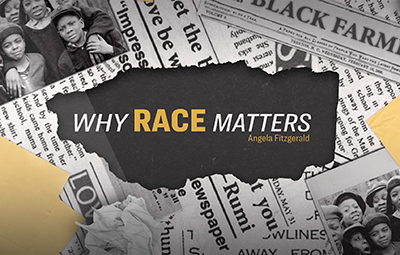





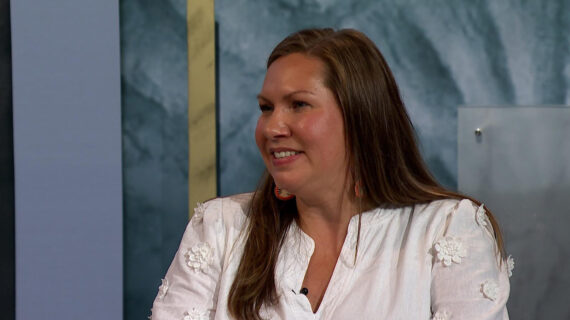
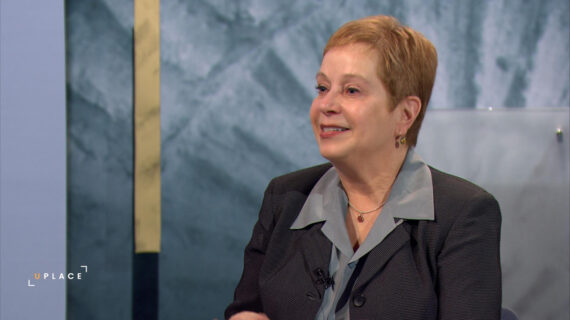

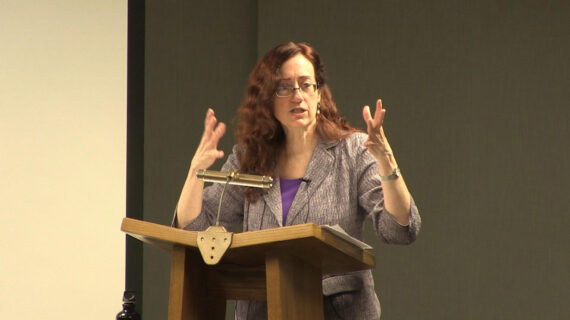
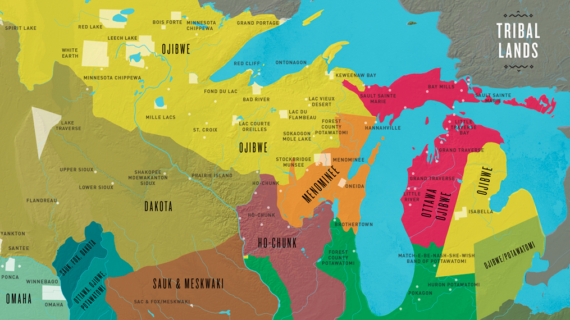


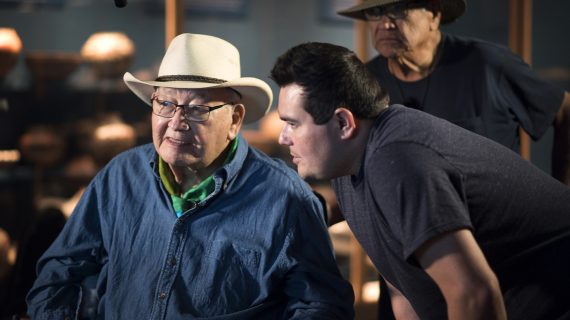

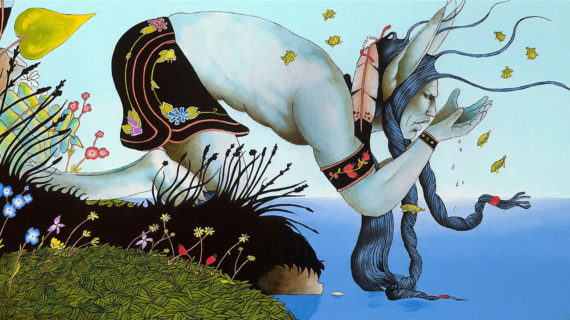

Follow Us